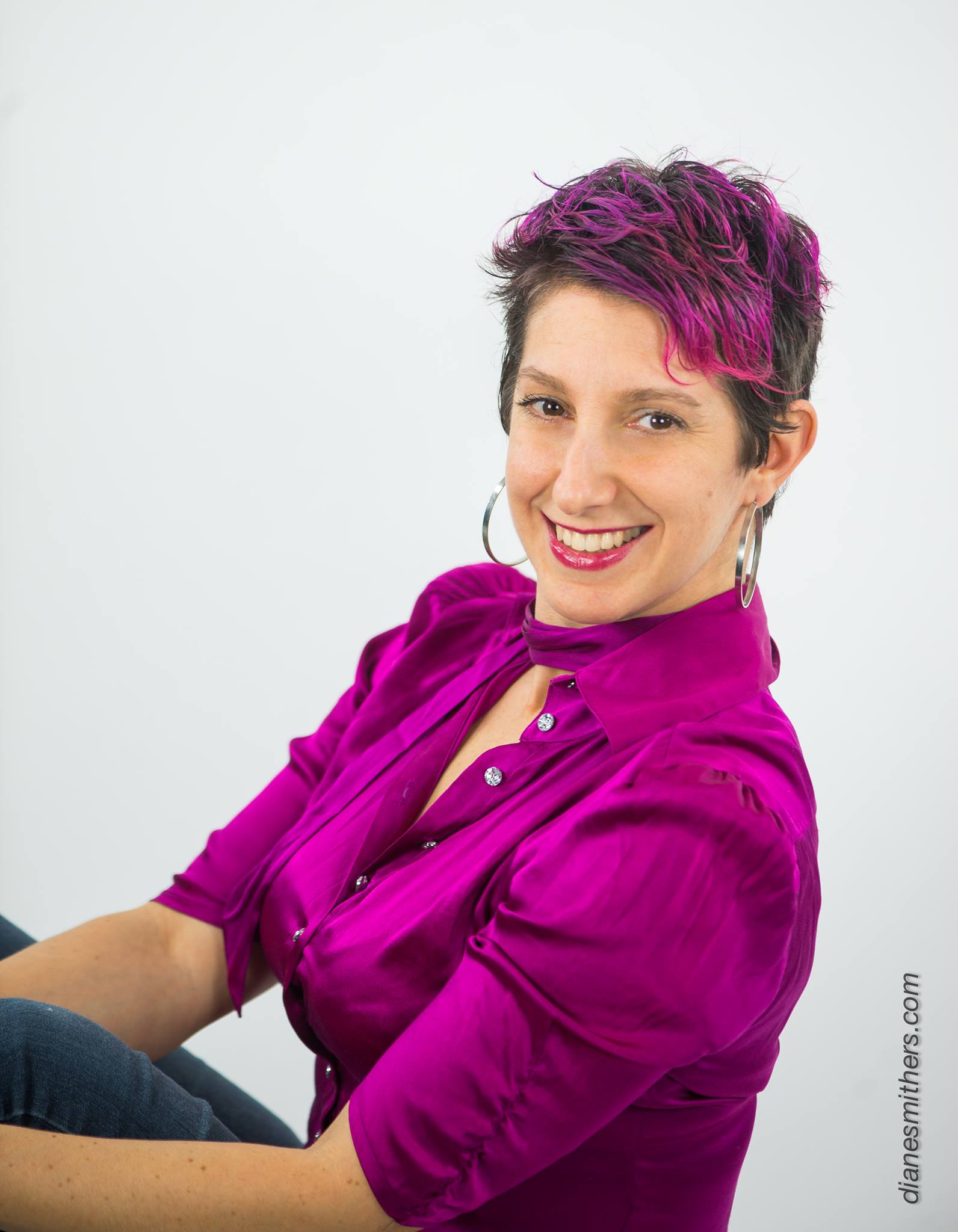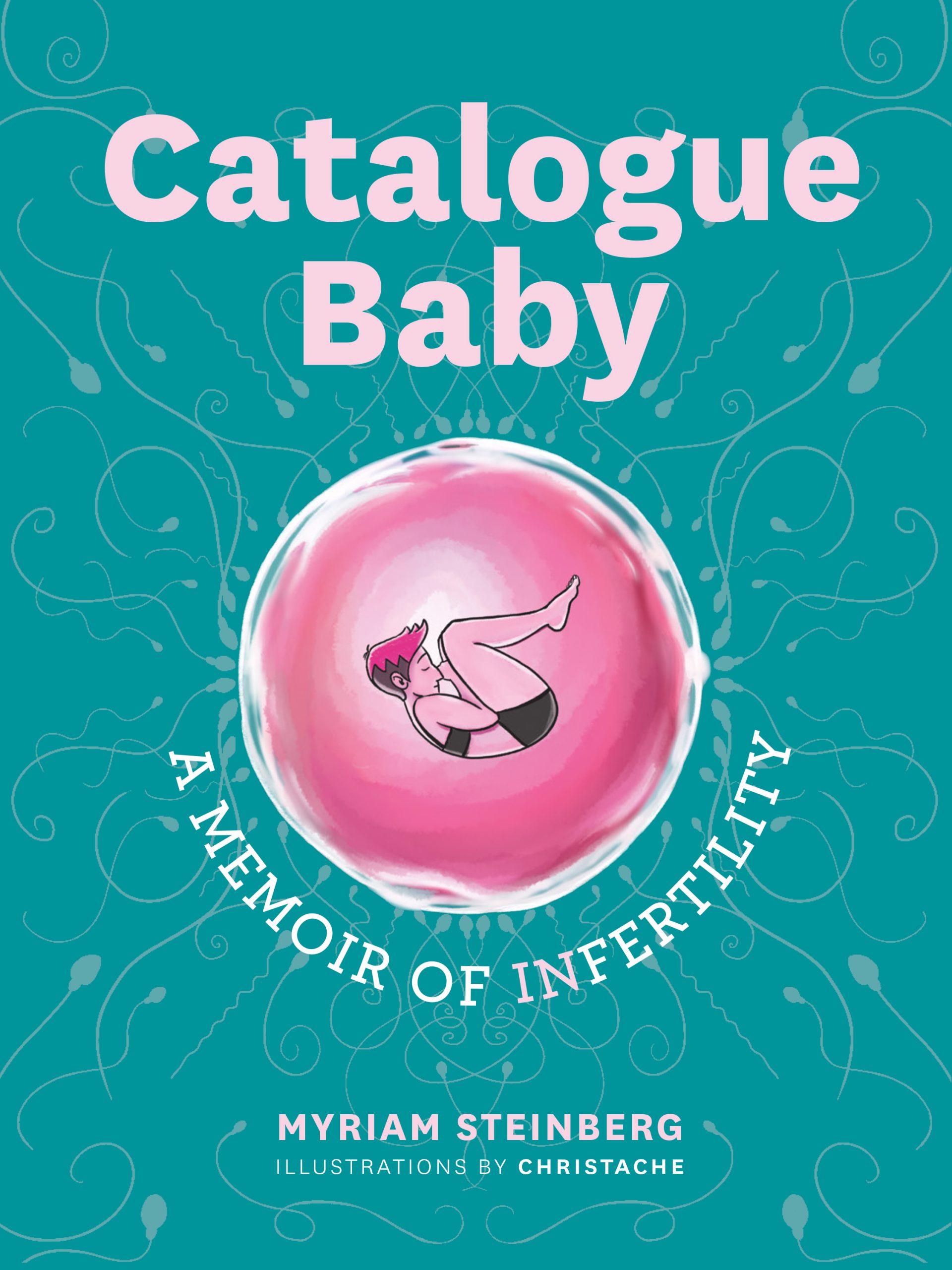This Award-Winning Graphic Novel is Helping “Break the Silence and Taboos Surrounding the World of Infertility and Infant Loss”
When words couldn’t come close to describing the highs, the lows and all the in-betweens of her family building journey, Myriam Steinberg turned to images. A single mother by choice, Myriam experienced multiple losses before having her twins through egg and sperm donor IVF. Her graphic novel Catalogue Baby is an honest, compassionate and at times humorous account of her painful path to motherhood. During our conversations, Myriam has shared her story, the importance of a solid support network and how, through her book, she hopes to be there for other intended parents and fertility patients. Read on for Myriam’s story and her advice to others navigating this highly emotional journey.

- Your journey to create your beautiful family as a single Mom was long, emotional, complicated — yet at the same time, one that I’m sure has inspired hope in other single intended mothers. Can you share a bit about your path to parenthood and how you persevered along the way?
I decided to become a single mother by choice because, at 40, my boyfriend at the time, wasn’t ready for kids. I didn’t have any more time to waste so I made the leap into doing it on my own. I thought it would be an easy road, and I did actually get pregnant at the first IUI. Unfortunately, I miscarried the day before my first ultrasound at 8 weeks. After several more tries, I was finally pregnant again. This time, however, I found out that the baby had a genetic fetal anomaly, and I had to decide if I was going to keep the pregnancy or not. After a few devastating weeks of research, soul-searching, and flip-flopping between one decision vs another, I decided to terminate. That’s when I moved on to IVF. I couldn’t risk going through that again and wanted to get the embryos genetically tested. The first two cycles I had a good number of eggs, but none of the resulting embryos were viable. On the third try, I ended up with one viable embryo, which I then promptly miscarried. At that point, I had nothing left in me to go for another IVF cycle. But I knew I still wanted to have a baby. I decided to use an egg donor as well as a sperm donor. The first donor I chose produced one viable embryo that I also miscarried. It wasn’t until I’d chosen a second egg donor that I was finally pregnant with what ended up being my rainbow baby twins. The pregnancy was very difficult (Twin A’s water broke at 18 weeks) and they were born two months premature. We spent two months in the NICU before we all came home. The twins are now 3 years old and lively, healthy, beautiful kids.
There were many moments where I was close to giving up. If it hadn’t been for my friends and family I don’t know what I would have done. My counsellor was also a great help. At my darkest hour, she gave me an exercise: Live one week as if you’d 100% made the decision not to have kids and see how that feels in your mind and body. Then live another week as if you’ve decided that you will have that baby and that you will do whatever it takes. See how that feels. I think I lasted 2 hours on the “not having a baby” side. So I asked my friends and family to hold the hope for me so that I could focus on the logistics of having that baby. I found that trying to maintain hope on my own was taking up too much emotional and logistical space, so letting others hold it for me, really freed me a lot. By the end, I was also in a place where the glee and excitement of being pregnant was heavily tapered down by a cautious neutrality so that I wouldn’t fall from too high yet again if things went wrong. It made me sad to not have that joy, but it was also a healthy protection.
- Following your personal experience, how did you come up with the idea to create a graphic novel? What do you hope Catalogue Baby brings to the lives of readers struggling with infertility and loss… but making every effort to maintain hope?
As I was going through the journey, I found that there weren’t the resources out there that really spoke to me. Stories were either too clinical or out of context little vignettes. Interestingly enough, it was the moments of wtf just happened to me and the funny, weird moments that really led me to write my story. It made the realities of the grief and pain all the more poignant because life isn’t just sadness and challenge. Pain usually lives side by side with moments of levity and joy. When in the throes of miscarriage or infertility, those moments of joy can be confusing and discombobulating but they are also necessary to survive.
In terms of making Catalogue Baby into a graphic novel, I decided to go that route for several reasons. First, I’m a very visual person. Much of what I experienced doesn’t have words to describe it, or there are just too many words to describe it, and a reader would get lost in it. When faced with images, you are transported directly into the author’s experience in a way that is much deeper and more visceral. I’m hoping that someone reading the book will find nuggets of themselves in the story and know that they are not alone. I hope they will find hope, solidarity, a sense that they are not broken, and that they will feel seen.
Hope is a really hard thing to maintain when things are going consistently wrong. Support is a difficult thing to give to someone going through loss and infertility. I included a whole section in the book of what helped me and what didn’t (including triggering comments). The book isn’t just for those going through the loss and infertility, but also for their support networks to better understand what is going on and how they can help their loved one through the hard times – even just a little bit.

- Infertility is an emotional journey – some will say it’s almost as difficult as the physical one. How do you suggest other intended parents set themselves up with a plan and support network to help them through it?
I would argue that infertility is often actually harder emotionally than physically. Most times, the physical pain is temporary. It may happen often, but each time it hopefully goes away. The emotional burden, however, never goes away. It does morph and change though. It diminishes over time, but then can sneak attack you at any moment. Sometimes the triggers that got you while you were trying to have a baby can still trigger you years after, even if you do finally get your rainbow baby(ies). For me, the PTSD is real. It affects some of my relationships, and it affects my way in the world.
Whether you are partnered or not, going through a fertility journey can be very lonely. If you are embarking on the journey to parenthood, I would suggest getting a solid network of support people around you. Even if it’s just one person (ideally you’d have more though, because compassion fatigue is a thing). If you have only one person in your life you can trust, joining on-line support groups is really helpful. They are going through similar things and understand more completely what you need to hear and how to listen to your story.
- We’re excited about your upcoming second book launch! Can you give us a little preview of what we can look forward to?
Woohoo!! Yes! The sequel to Catalogue Baby, called Stick, Stay, Grow, follows the conception, high-risk pregnancy, life in the NICU, and the first few months at home as a single mom by choice to twins. Although the taboos around such things aren’t as strong as those around discussing infertility and pregnancy loss, the silence is just as pervasive. So… here I am again! Writing about maternal fetal health – only this time it’s from a different angle. More info about that book can be found at www.cataloguebabynovel.com/stick-stay-grow.
- What are your words of wisdom for new intended parents or fertility patients just beginning their own family building journey?
Words of wisdom…
Find your people.
If one method of trying to get pregnant doesn’t work, try another. There is no shame in moving from IUI to IVF, and then, if needed, to egg donorship. I’m not saying it’s necessarily easy to come to terms with it, especially the piece around having a baby that is genetically related to you, but I found, and countless people I’ve talked to have found, that in the end… it doesn’t matter. Your child is your child, no matter if they carry your genes, no matter if you had to use a surrogate, no matter what other factors came into their creation. Fears of bonding with one’s baby are legitimate, but it is important to remember that folks who have easy paths don’t always bond with their babies either.
Also epigenetics. Read into that. Super cool and definitely helped me reconcile myself to using an egg donor.
When I was finally pregnant with my twins, I had a mantra: Stick, Stay, Grow (that’s why it’s the title of my new book). Please baby stay stuck to my uterine lining, please baby stay inside my uterus, and please baby, grow grow grow and come out alive, strong, and healthy! I would lie in bed or on the couch, hands on belly, eyes closed, and repeat it over and over again to the babies. It was in those moments that I allowed hope to blossom in me and come out of my neutral zone. It was in those moments that I connected the most strongly with the babies in my belly and that I could let myself believe that they were alive and kicking inside me.
Thank you for being so honest and open about each stage of your journey, Myriam, and for supporting so many others, as they navigate their own.
Intended parents, learn more about Catalogue Baby here.